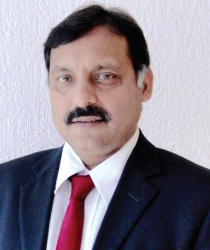Sanjiv Saklani
 Brilliance, perseverance, hard work and adaptability have been the sterling qualities of the Indian workforce that have resulted in creating a place for themselves in every walk of life, not just in India but the world over. Yet, while we have seen technology move and grow at a considerably faster pace across the world, India has witnessed its speed only in the past couple of decades, especially in the Facilities Management space.
Brilliance, perseverance, hard work and adaptability have been the sterling qualities of the Indian workforce that have resulted in creating a place for themselves in every walk of life, not just in India but the world over. Yet, while we have seen technology move and grow at a considerably faster pace across the world, India has witnessed its speed only in the past couple of decades, especially in the Facilities Management space.
Over the past 10 years, with the growth of FM in India, more and more professionals are joining the stream. With all foreign brands having flooded the markets now, more specifically with all major IPC players in the Indian markets, a lot of newer technologies have been infused into the FM space in India.
Technology is becoming a big part of the FM industry, aimed at continuous improvement in operational efficiency, maximizing revenue & optimizing costs, not just for the service providers but also for the customers. Use of technology has brought about complete control in monitoring of automated systems and processes, equipment, energy-efficient devices, mechanized tools and tackles affecting the life cycle of the customer premises. We have come a long way. The age-old cleaning systems such as rough cloth dusters have been replaced with different kinds of material for different surfaces, sophisticated mops have replaced ‘jhadoos’. Acidic detergents with pungent smells have been discarded in favour of different types of eco-friendly cleaning material. We now use the most modern, sophisticated & safe mechanized cleaning equipment for every task that comes our way.
Traditionally, it had been the IT/ ITES, BFSI, Real Estate that drove the demand for FM outsourcing but the growth in the Retail (Malls), Hospitality, Healthcare, Education, Manufacturing & Industrial sectors are now pushing demand for increased adoption of FM services across the Country. So how does technology paint this picture? Compared to manual operations, FM software has many advantages. Presenting of real-time data, lack of manual errors while monitoring or recording, easy statistical analysis from data bank, planning and scheduling activities and optimization of resource utilization by real-time monitoring or controlling, the list is endless.
 That is why the first investment by an FM company on taking up a client should be to bring in technologies to capture expense efficiently, allowing clients to build a baseline. At the operating level they bring in technology to effectively manage operations. These are automated maintenance management tools or platforms that keep track of all assets. There are applications and tools to track, manage and save energy more efficiently. From a compliance perspective technology helps to manage risks and ensure security and safety. ERP systems are used for financial and purchase functions. In cases where computer-aided facility management (CAFM) software is used, key areas typically include maintenance, asset and compliance management, inventory modules, purchase-to-procure systems & energy-saving devices.
That is why the first investment by an FM company on taking up a client should be to bring in technologies to capture expense efficiently, allowing clients to build a baseline. At the operating level they bring in technology to effectively manage operations. These are automated maintenance management tools or platforms that keep track of all assets. There are applications and tools to track, manage and save energy more efficiently. From a compliance perspective technology helps to manage risks and ensure security and safety. ERP systems are used for financial and purchase functions. In cases where computer-aided facility management (CAFM) software is used, key areas typically include maintenance, asset and compliance management, inventory modules, purchase-to-procure systems & energy-saving devices.
The Government’s “Digital India” campaign has promoted adoption of digital technologies to deliver government services and promote scalable e-governance. FM Companies working on In-house models with a large workforce, are bound to follow digitization in the Provident Fund, ESI & linking Aadhaar numbers in the e-portals. This has made it easier for the employers as well the government bodies to capture & monitor compliances. Cloud platforms have made it easier to maintain data.
We have seen communication happening through landline phones & pagers but easy & cheap access to internet & app-based technology has now made it simpler to mark attendances at customer sites for people at the grass root levels in the remotest of areas.
Robust technology driven security systems now ensure safety of customers and their premises.
The outsourcing of FM services is shifting from service bundling to service integration or IFM (Integrated Facility Management) and finally to workplace management which will empower organizations with seamless integration of information related to all their assets & resources.
This is now made possible with the use of high end technology. With advances in technology, we expect FM services to evolve from workplace management to cloud-based solutions and services underlined by Computer Aided Facility Management (CAFM).
Facilities are evolving day by day to incorporate modern technology. FM service providers need to keep themselves equipped with the transformation taking place in the technology space. Technology will also play a decisive role in ensuring delivery capability of FM services, encouraging the need for constant technological upgrades. It is evident from the state -of- the- art robotic technology that has been developed for cleaning aircrafts and the development of robotic help desk & task managers that is already on the way.
 CIJConnect Bot-enabled WhatsApp
CIJConnect Bot-enabled WhatsApp









